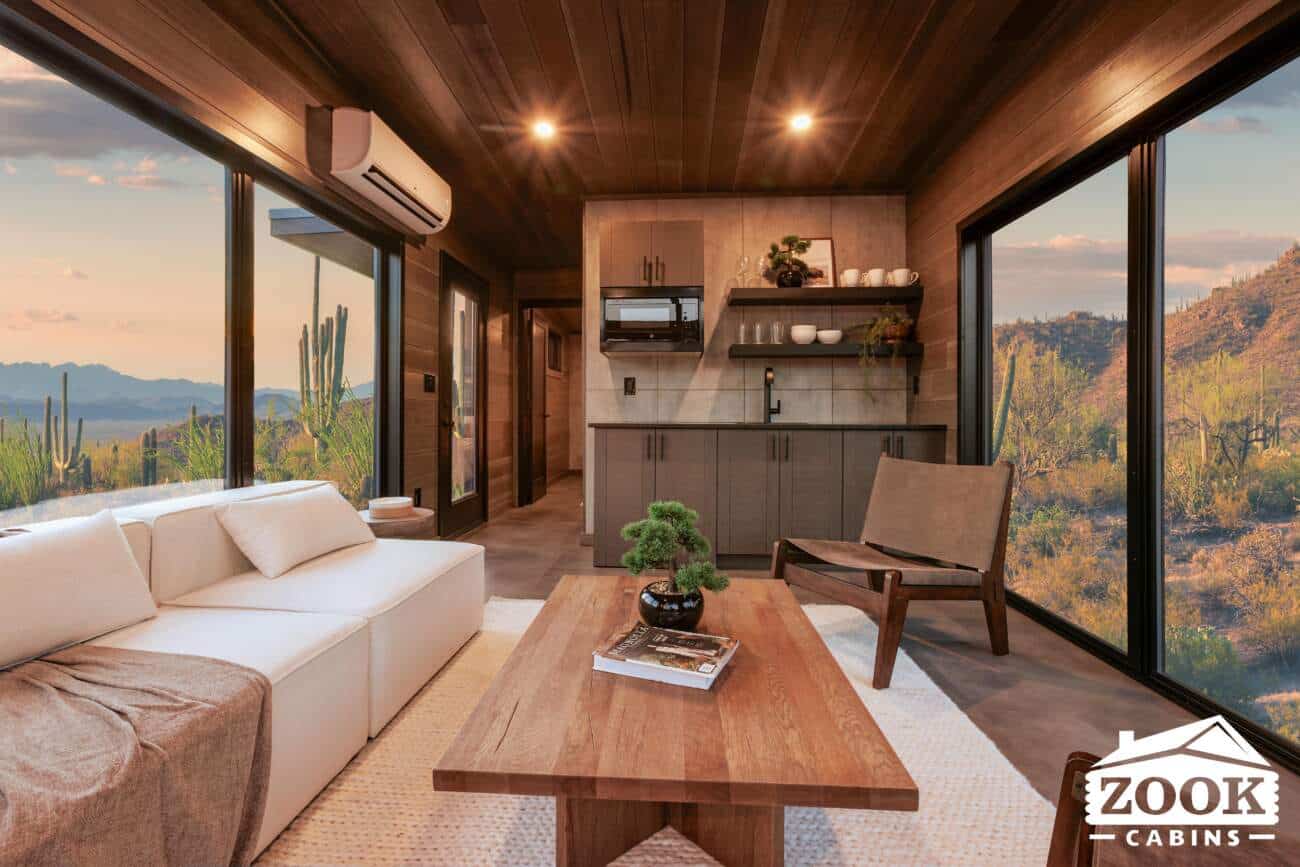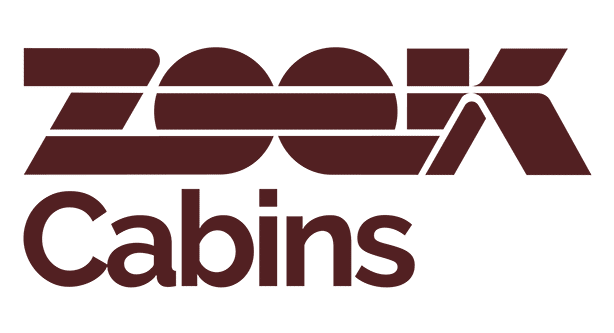
Park Model Homes | A Complete Buying Guide
In the world of vacation homes, RVs, and Airbnb, there is a trend that is steadily gaining traction. Meet the park model home. As you begin to look into the world of tiny homes, you will soon see the park model home rise to the top. Park model homes provide flexibility, affordable low-cost/high-ROI investment opportunities, and a turn-key short-term housing solution.
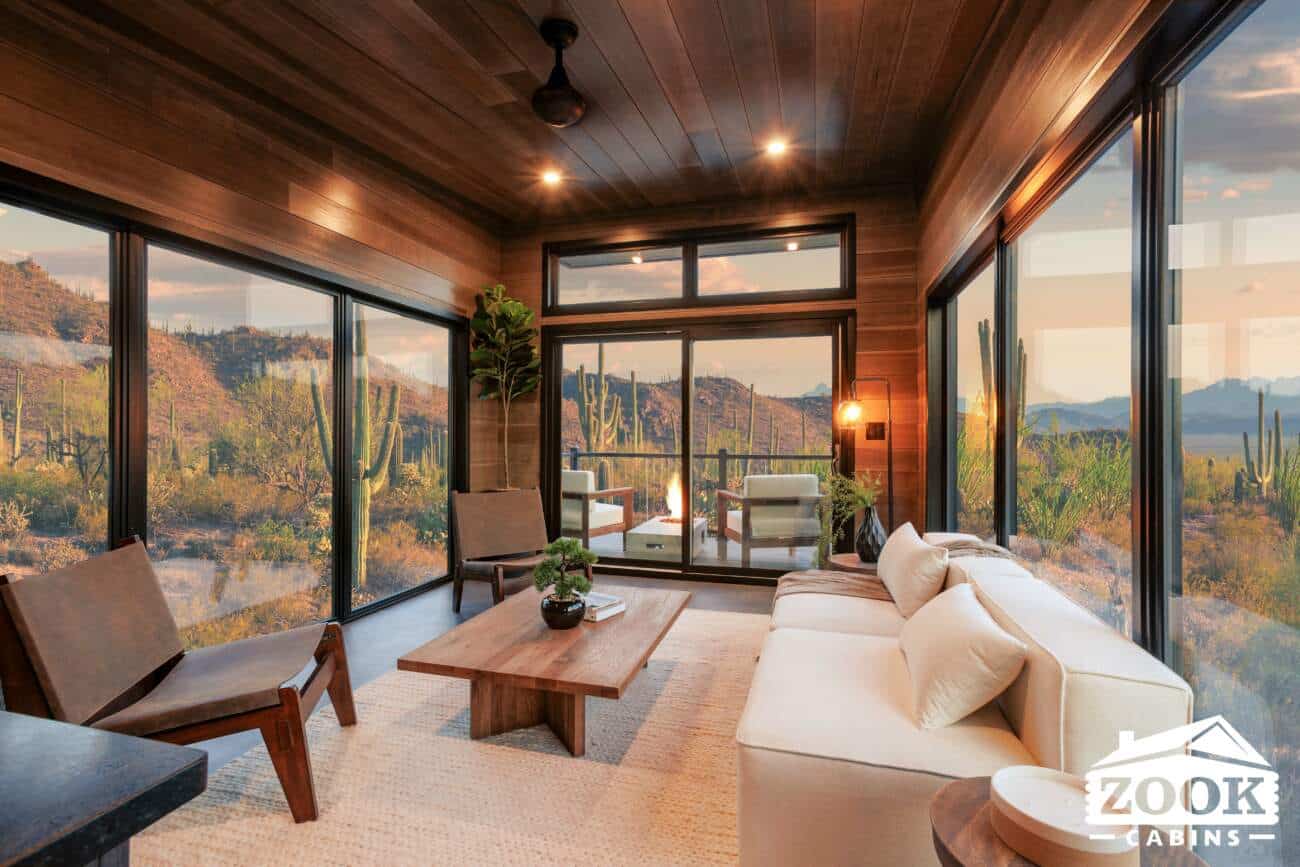
What Is A Park Model Home?
A park model is a tiny home built on a chassis and wheels and manufactured to the ANSI A119.5 RV code. Park model homes are considered recreational vehicles and are designed to be parked at a long-term or even permanent location, usually in an RV or Mobile Home Park. Park model homes are most often used for temporary housing and recreational or seasonal vacation homes.
And as the quality of the build increases and the popularity of tiny home living has gone up, more people are becoming interested in park model homes as a housing solution. And while park models make great short-term housing, in most cases, full-time living in a park model home is not permitted. Park Model Homes provide the camping vibes but with the conveniences of a modern home. Like a traditional RV, Park Models do need to be connected to the site’s electricity, water, and sewage, although most Park Models don’t have holding tanks due to the difference in usage between the two.
To qualify as a park model home, it must meet the following criteria:
- Have 399 or fewer square feet of living space (except in Florida, where it is 499 square feet)
- Built to the ANSI A119.5 RV code, making it a recreational vehicle.
- Have a registration, tags, and insurance, like any other RV.
There are several names for a park model home, including a park model RV (PMRV), an RV park model, or simply a park model. But whatever you call it, a park model home provides a fascinating opportunity as a temporary housing solution, ADU (or accessory dwelling unit), or a short-term vacation home or rental.
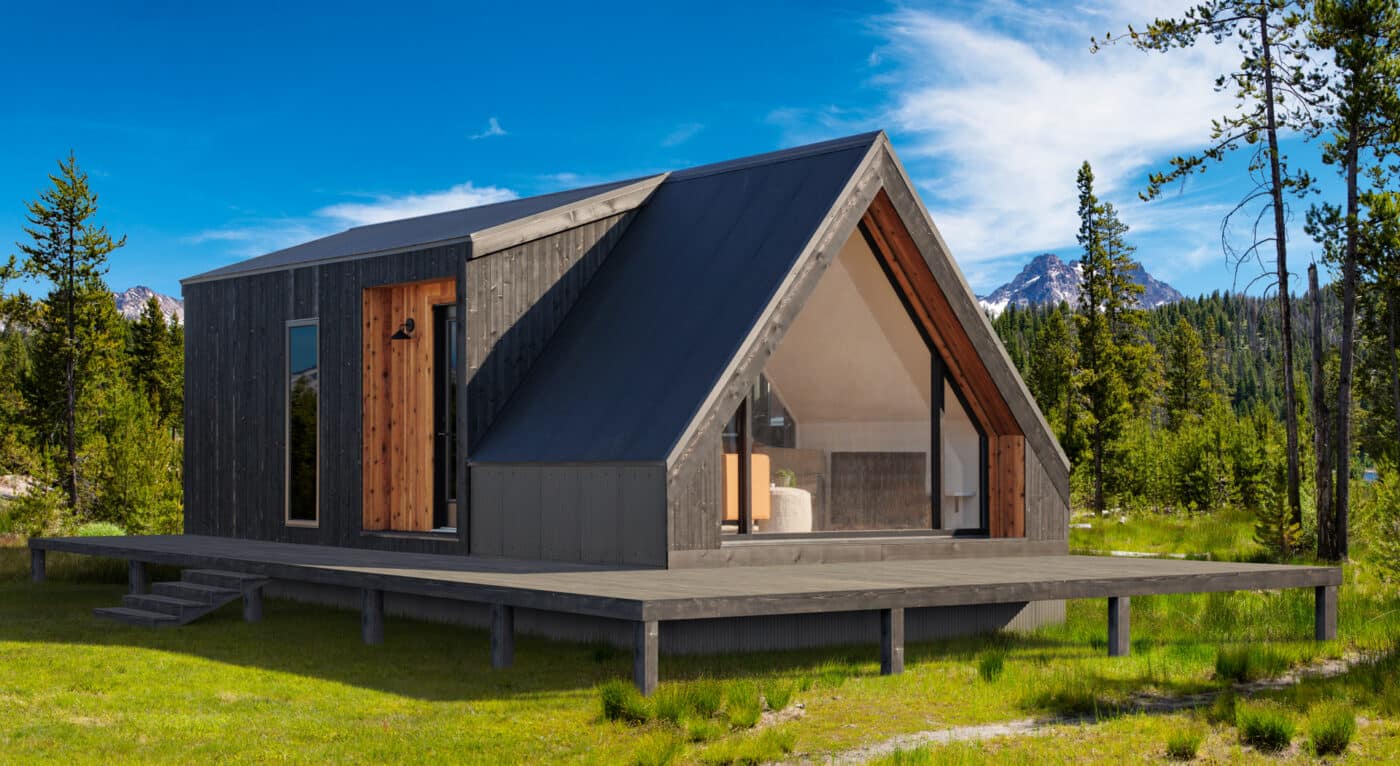
What Is The Difference Between A Modular Home And A Park Model?
A modular home is a prefabricated home built in a manufacturing facility that is then delivered to your site in sections or modules and put in place with a crane. A park model home, in contrast, is built on a trailer and, therefore, can be delivered and moved without the need for a crane. A modular home is simply the new name for the old mobile home.
Modular homes are also required to be built to the HUD construction code and can be used for a permanent dwelling, whereas park models are classified as recreational vehicles, require tags, registration, and insurance, and aren’t designed to be full-time residences.
What Is The Difference Between A Park Model And An Rv?
Park model homes and RVs are actually built to the same standards, called the ANSI A119.5 Code for recreational park trailers. Both RVs and Park Models are registered the same and require tags and insurance as per your state requirements.
The primary difference between a park model and an RV is the usage. RVs are designed to be mobile and moved on a regular basis, while park model homes are designed for longer-term situations, like a campground or other vacation location.
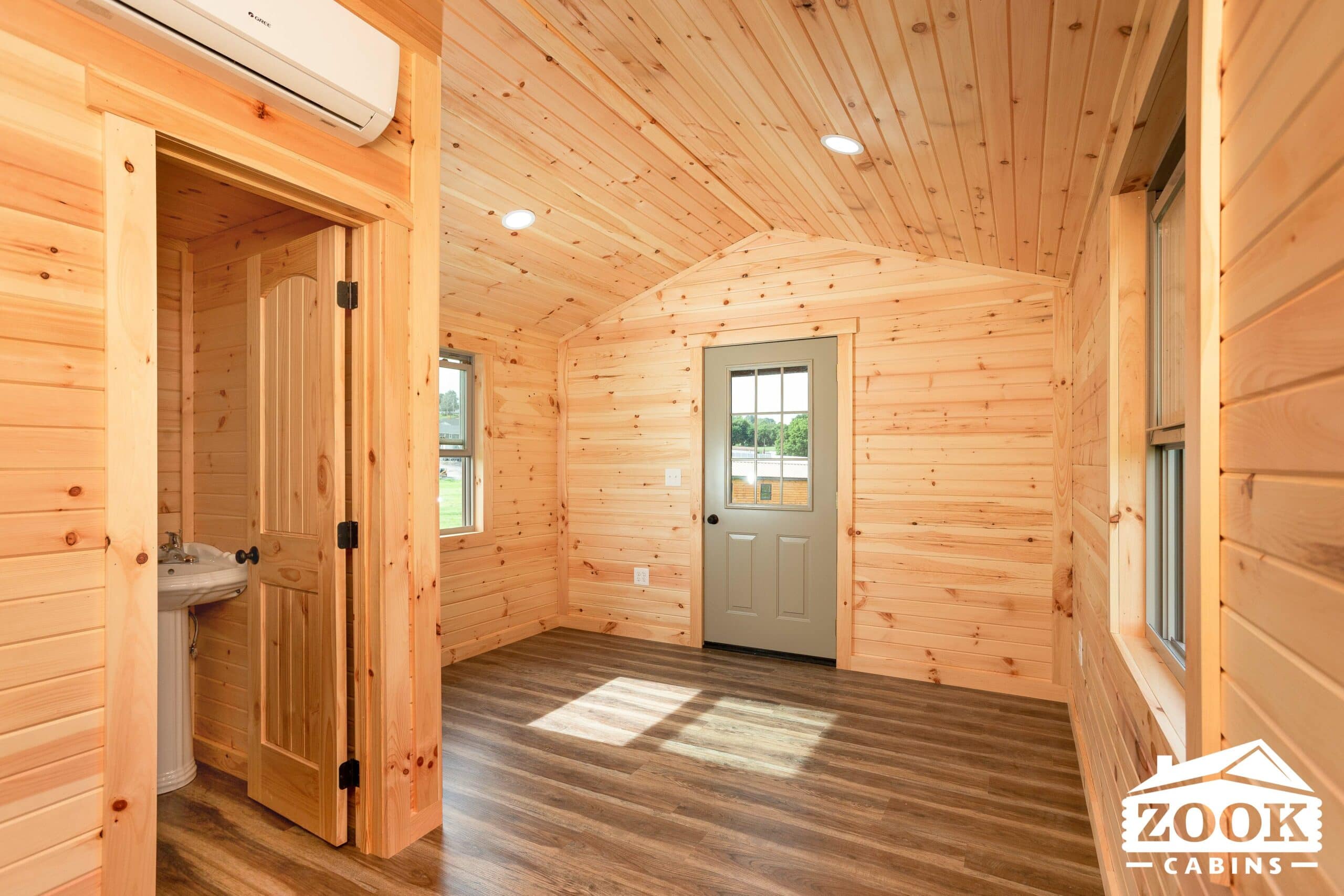
What Is The Average Size Of A Park Model?
An average park model home is approximately 12 ft wide and 33 ft long and not more than 400 square feet of living space (not including any loft areas or porches). In fact, legally, a park model home is required to be under 400 square feet. Besides the square footage of living space, the length and width of a park model home are only limited by the total width allowed on the roadways when moving your park model.
The joy of a park model is that you can add a deck or porch after you’ve parked your park model to expand your living space into the great outdoors. This is especially true in the warmer areas of the country.
Are Park Model Homes HUD Approved?
Park model homes are designed and manufactured by the American National Standards Institute (ANSI119.5) for Park Model Recreational Vehicles (PMRV). Because of this classification, Park Model Homes are excluded from the HUD’s definition of manufactured homes at 24 CFR 3282.8(g).
The only exception to this is a special version of a park model home that is over 400 square feet but less than 500 square feet and is often referred to as a HUD Park Model Home. The HUD Park model is only approved for the state of Florida, and is built to the Housing and Urban Development standard. This park model is still considered a recreational vehicle and might not be eligible for installation in some modular home parks.
Learn more about the differences between ANSI119.5 and HUD here.
Can Park Model Homes Be Moved?
Due to the fact that Park Model Homes are built on a chasse with wheels, they are relatively easy to move. Simply remove the skirting around the park model, disconnect all the utilities, and hook up to your transport vehicle. An RV is designed to be a home “on the road” and can easily be moved from place to place, and is often used by today’s digital nomads as both a home and a form of transportation. A park model is different in that it is only used as a living space if its parked, stabilized, and hooked up to the on-site utilities.
As with delivery, transporting a park model home requires permits and oversized load escorts and, as such, should only be done by a professional.
Can You Live Full-Time In A Park Model?
Park Model Homes or RVs are designed as a temporary housing solution, either as a vacation home, hunting lodge, camping cabins, or a place to live while finding another housing solution. While park model homes are designed for more sustained living than a traditional RV, in most cases, Park Models are best only used a few months at a time.
On the legal side, Park Model Homes are in a gray area, and many local and state governments and townships don’t have specific regulations for park model homes. Parking your Park Model RV in an established campground or mobile home park is usually a good place to start. You can also check with your township to find out the regulations in your specific area.
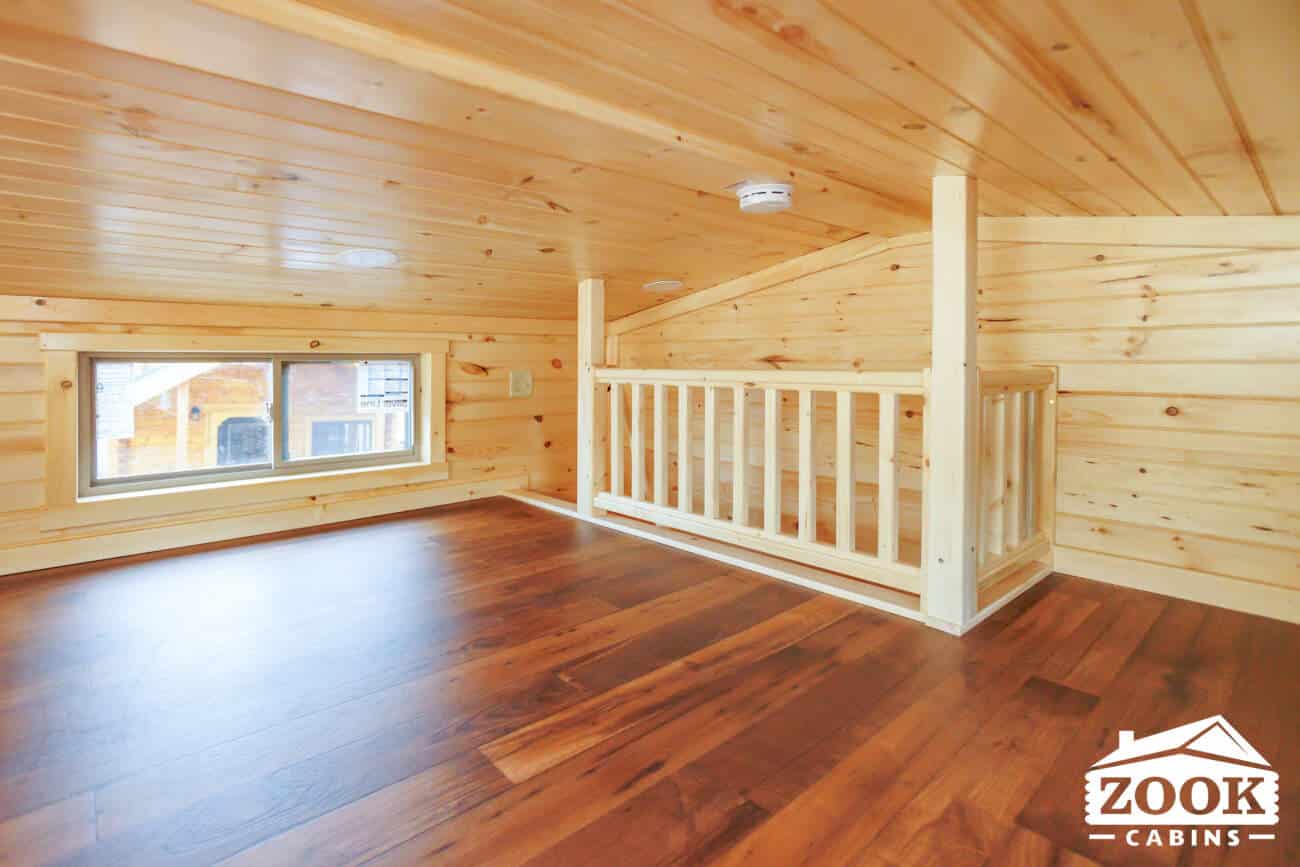
Park Model Home:
Site Preparation, Utilities, Delivery, And Setup
One of the many benefits of investing in a park model home is how simple the setup process is. With only a simple gravel or concrete pad and access to the basic utilities, you have what you need to install a park model home.
All the utilities are simple RV hookups, including sewer, water, and electricity. It is important, though, to contact your local zoning office to confirm that an RVIA Certified Park Model Home is approved for your location before purchasing a Park Model home.
Site Preparation
Because all park model homes are built on a trailer with wheels, site preparation is really simple. All you really need is a level stone or concrete pad. Once your park model is delivered, it will need to be stabilized with concrete blocks, RV jacks, or other more permanent stabilization if you are planning on not moving your park model in the near future. You will also need to secure your park model to the ground with hurricane ties or other similar fasteners. This requirement varies depending on your location and the local regulations.
Utilities
Once you have chosen your site location for your park model, you will need to install the infrastructure to support your new investment. You will need a standard 100-amp electric hook-up, a garden hose connection, and a 3” sewer discharge pipe hook-up. Getting your utilities installed and ready for your location is the hard part, and the fun is just about to begin.
And once your park model is delivered, it’s as easy as 1-2-3, and you are ready to enjoy your new “home”.
- Hook up your electricity.
- Hook up your water supply.
- Hook up your sewer connection.
Delivery
After the rest of your site preparation is completed, including all the necessary utility preparation. It’s time to deliver your new Park Model. Most Park Model Home manufacturers include delivery in the initial cost of your park model, but double-check this, so you don’t get a big surprise on delivery day. Because park model homes are built on a trailer, delivery is not as complicated as some other modular builds.
Park Model Homes are usually considered oversized loads and require permitting for highways, escorts, etc. You will want to confirm with your manufacturer that all these details are in place and the costs covered before signing on to your new park model home.
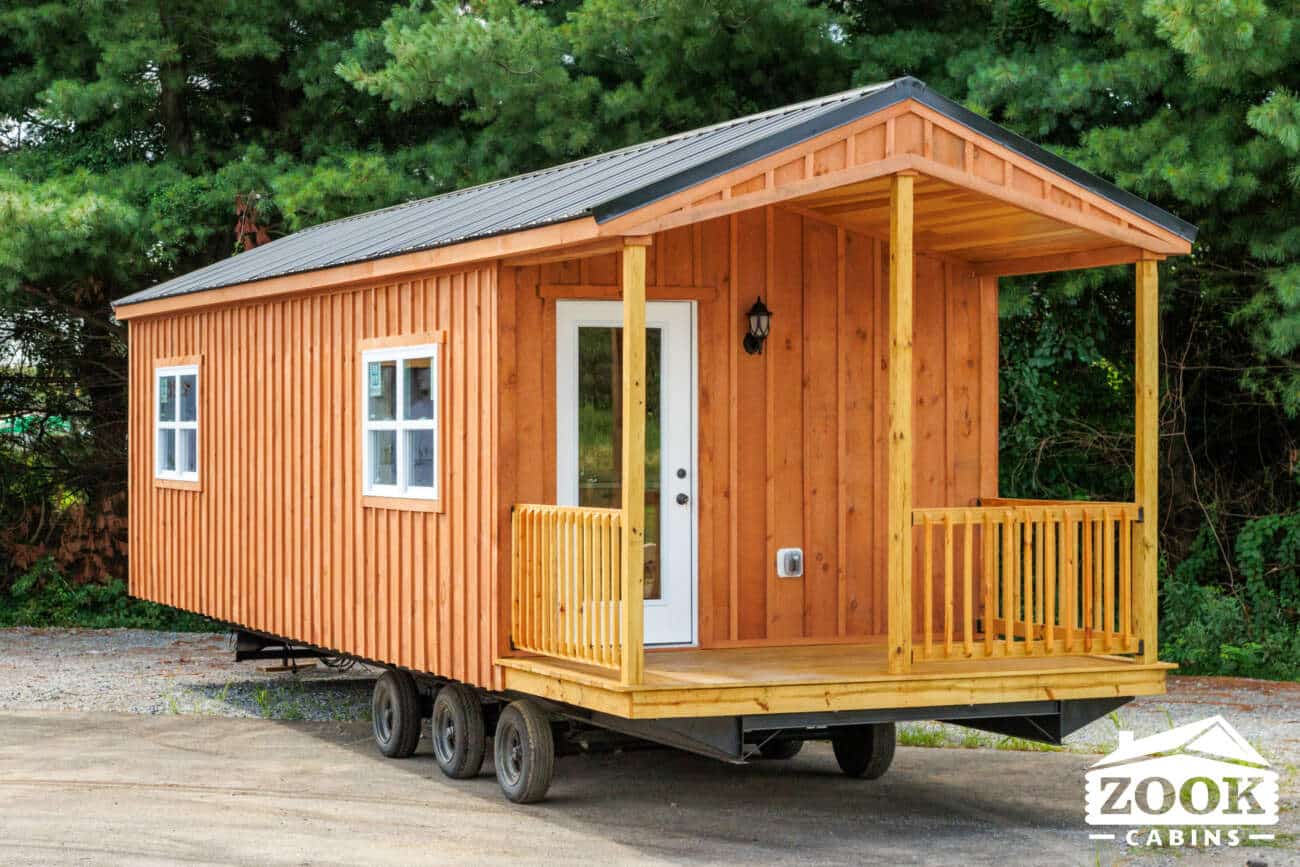
Final Setup And Making Your Park Model A Home
Once your park model is delivered and hooked up to all the necessary utilities, it’s time to turn your new park model into an inviting oasis. There are many ways to make this happen, most of which will depend on your personal preferences and long-term plans for the park model home.
Park Model Skirting
A common way to hide all the bracing, tie-downs, and wheels or axles underneath your park model is to install skirting. Park Model skirting is simply a decorative covering that goes from the bottom of your home to the ground, enclosing all the unsightly things on the actual trailer part of your park model home.
Park model skirting has traditionally been a vinyl siding with matching trim. But today, you can find skirting options that include anything from stone veneer panels to authentic log siding and more. Once you have the skirting installed, you can easily landscape around it and take your park model living up a notch.
Add A Deck
Park model homes are limited to 400 square feet of living space, but that doesn’t limit you when it comes to add-ons when your park model is actually parked. Many park models have a small porch already included, but these are also limited in size due to the complication of transporting larger decks with your park model. Adding a deck or large porch beside your park model is a great way to increase your space, especially during the summer months, or in warmer climates where outdoor living is more common and feasible. You can make your deck as large or small as you want, depending, of course, on where you have your park model located.
What Is It Like To Live In A Park Model?
Living in a park model home is very much like living in any other house or tiny home. A high-quality park model home includes all the amenities of a regular home, including a full kitchen and bathroom. While the main living space is limited to under 400 sq.ft. many models include a loft area. A loft gives you extra storage or space for more beds without decreasing your first-floor plan. Another popular way to improve your park model home living experience is to add a porch or deck after your home is in place.
Despite the small size, park models are designed to optimize the available space and are really quite cozy and comfortable. Some park models actually have as much room as a small apartment and offer a great living experience, especially for a vacation stay, or snowbirds, in the south wanting a temporary home in the winter to avoid the cold and snow of the northern states.
If you like to experience life in a park model home, check out these park models on Airbnb.
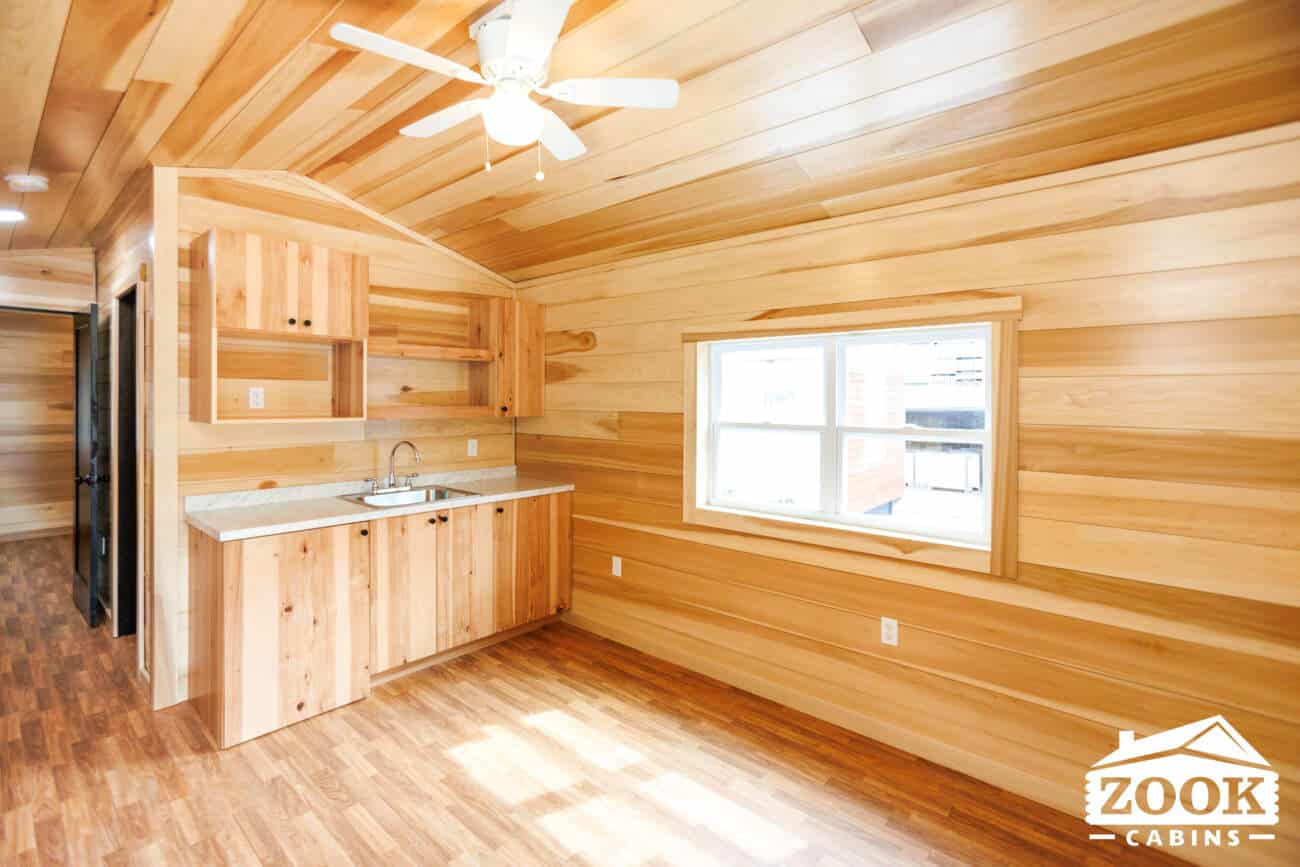
Popular Uses For Park Model Homes
Due to the fact that Park model homes are designated as recreational vehicles, the ways to best utilize them might not be as obvious as in other homes. There are countless ways to utilize your park model RV. Whether it’s purchasing a park model to place at a campground, investing in a park model as a temporary housing solution while you are building your dream home, or simply adding a park model to your property as an ADU (accessory dwelling unit). Below is a list of the most common uses for park model homes.
Campgrounds

Campgrounds are beginning to see the value in having park model homes or cabins in their campground, giving their visitors another way to experience the campground and surrounding areas. This brings in another demographic of campers, such as the glamping crowd, that might otherwise be missed if your campground didn’t feature park models.
A small campground might only need one or two park models to meet the demand, while other larger properties have had a lot of success with more of a park model community vibe.
Vacation Getaway Cabins
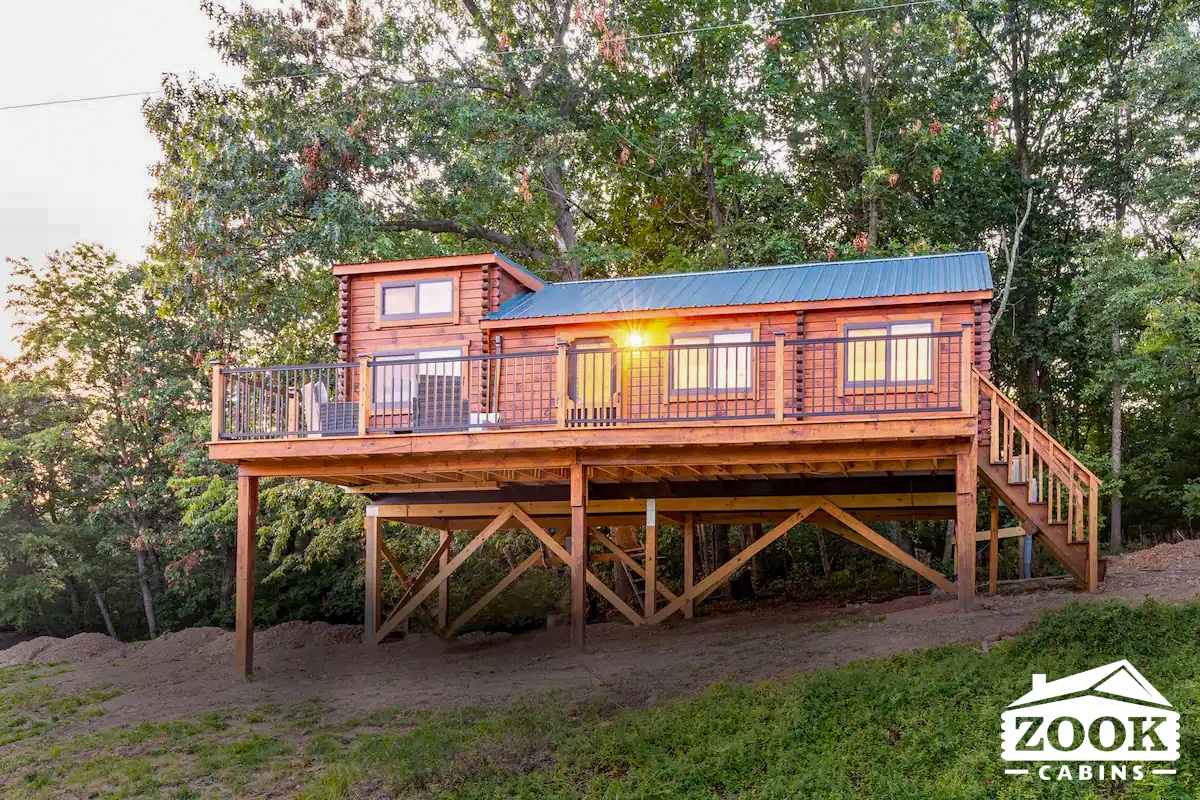
Do you have that perfect property up in the mountains or by the lake but don’t have the resources or “want-to” to build a home or cabin there? A park model home is a great alternative to consider. A park model only requires a simple level pad and utilities, and you’ve got yourself that dream vacation home you and your family deserve without spending your life savings.
If you want to stay in this park model, check it out here.
Airbnb
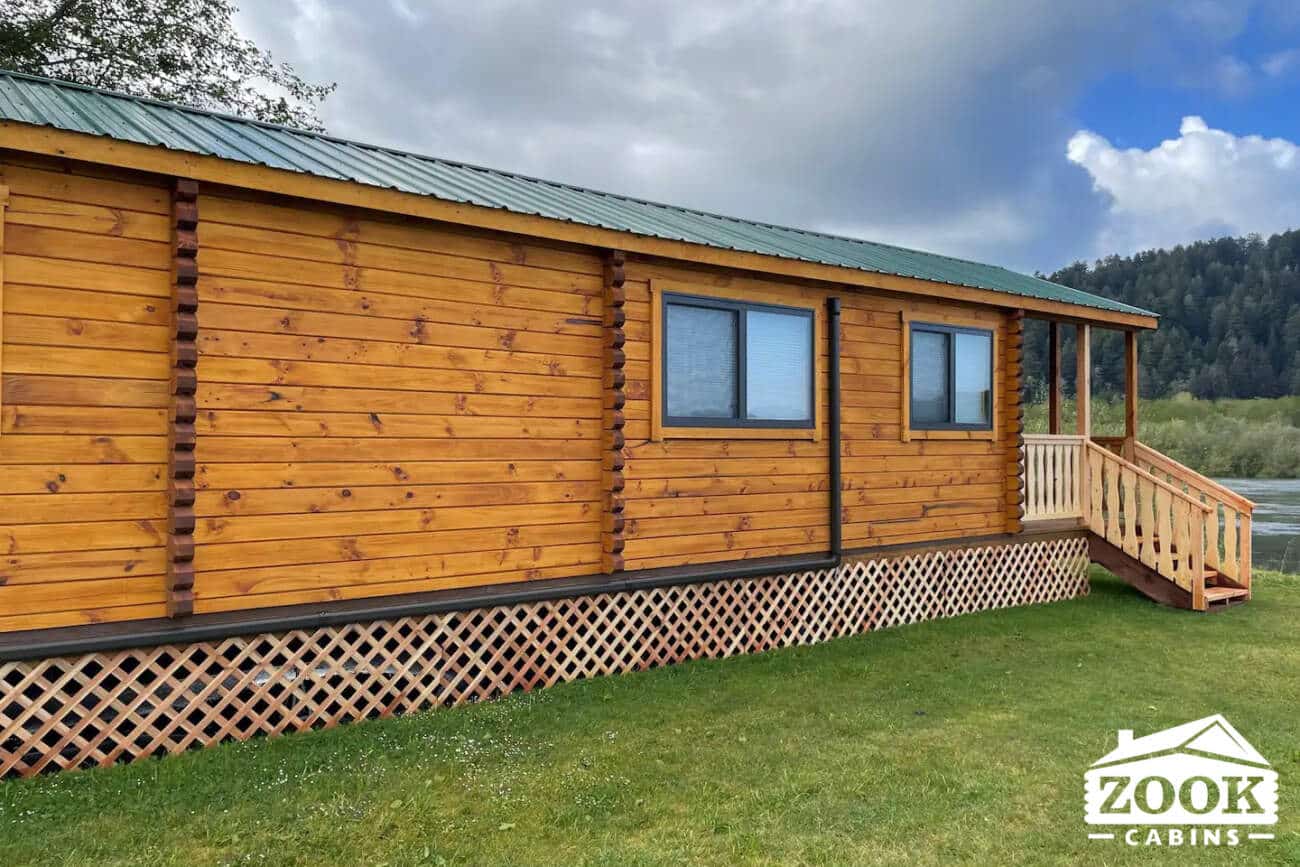
Are you looking for a high-quality short-term investment? Investing in a park model home and offering it on a vacation rental platform like Airbnb or VRBO is a great way to start getting some passive income. To learn more about the investment opportunities of park model homes and vacation rentals, visit our blog here.
Here are some examples of park model homes on AirBnB, on VRBO, and on booking.com.
Temporary Housing

In today’s marketing, with housing, and specifically new housing construction, being on such a backlog, having a place to temporarily call home is important. This is where a park model is a great solution. With very little overhead, a short turnaround time, and a turn-key package, you can have your own tiny home park model set up at your property and don’t need to stress about when your dream home project is completed.
Accessory Dwelling Unit
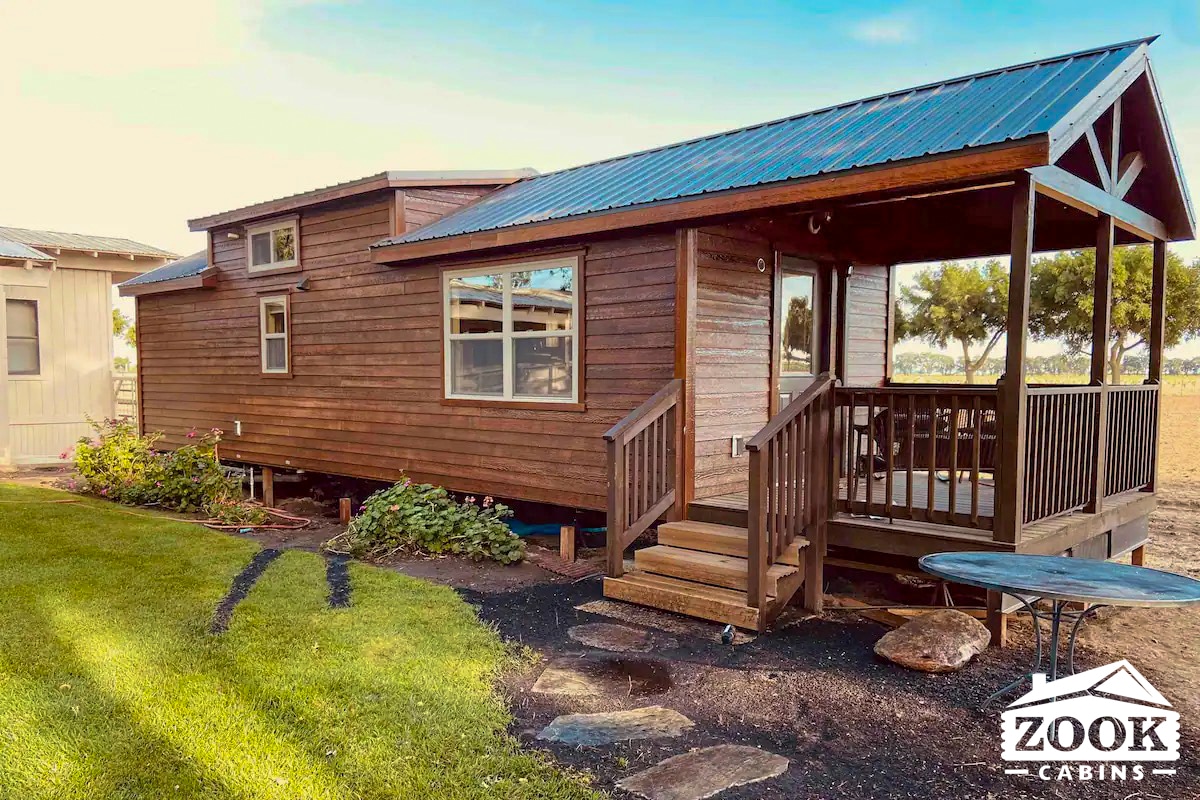
Another ideal use for a park model home is as an ADU or accessory dwelling unit. An accessory dwelling unit is a secondary home or apartment that shares a lot with a larger, usually primary residence. This provides extra living space for friends or family coming through the area without crowding your home. It also provides a place for your visitors to get away and have some privacy. Many homeowners also choose to rent out their ADU for short-term rentals as an extra source of income.
Tiny Homes Vs Park Model Homes
So what is the difference between Tiny Homes and Park Models? At a glance, park model homes and tiny homes look very similar. Often they serve similar purposes, are usually somewhat portable, and even feature similar layouts. In short, a park model is a tiny home, but not all tiny homes are considered park model homes.
There is a moniker that says, “park models are simply tiny homes on steroids”. While there is truth to this statement, in general, tiny homes include a huge variety of small homes, houses built on wheels, etc., while a park model is a specific subsection of the tiny home market.
Tiny Homes do not strictly qualify as homes either. There are federal, state, and local laws which require that permanent residences are built to a federal, state, or local building code or standard, and very few Tiny Homes actually meet these criteria.
Park Model Homes Prices
When it comes to investing in a park model home, knowing the price range you are working with is a good place to start. While there are park model homes that are priced in the $20,000-$30,000 range, to get a high-quality new park model will average somewhere between $40,000-$100,00, with luxury models going even a little higher than that.
There are many different variables that factor into the price of a park model, including the style and model you choose, any features that you add, etc. Another huge variable is how far the park model needs to be transported, as delivery costs can be significant. For more information, check out this blog that will give you the whole scoop on park model prices.
Park Model Home Financing
A common question is, “can you finance a park model home”. The simple answer is “yes”, but with a caveat. Park Model Homes are classified as recreational vehicles and as such, don’t qualify for your typical home financing options. It does, however, allow you to apply for an RV loan and insurance.
Of course, you can also take out a personal loan or go with another popular option like a chattel mortgage. A chattel mortgage is a loan for a portable or moving piece of property, like machinery, a vehicle, or in this case, a park model home. The thing you are taking a loan for (think park model) also acts as the collateral for your loan. They also usually have higher interest rates and a shorter term length.
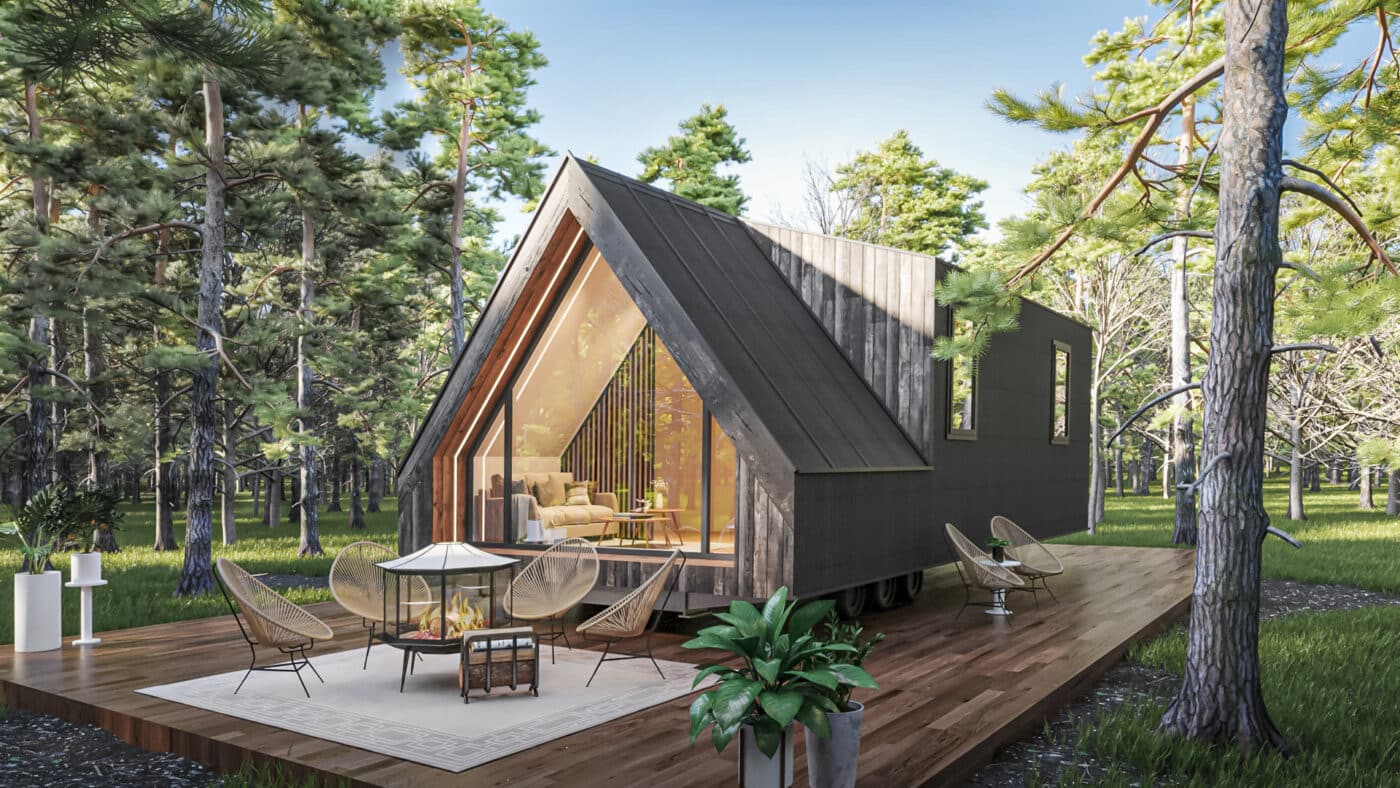
Are Park Model Homes A Good Investment?
Park Model Homes are a great short-term investment opportunity. With a low-cost initial investment and a high ROI potential, a park model home is a great way to round out your investment portfolio.
In short, if you purchase a park model home for $100,000, invest $35,000 and finance $65,000, even with only an 80% occupancy rate, this investment will pay itself off in approximately two and half years. Now, you answer the question, is that a good investment? If you like to see the numbers yourself, we have a whole article dedicated to investing in Park Model homes here.
Check Out Our Short Term Investment Calculator
Use our investment calculator to get a quick idea of what your gross income could be over 20 years. Enter your Purchase Price, Down Payment, Monthly Payment, Nightly Rental Cost, and Other Monthly Expenses to get a pdf with your estimated gross income. This gross income will be figured with 50%, 80%, and 100% occupancy.
"*" indicates required fields
Do Park Model Homes Hold Their Value?
With the increase in demand, and standards and quality with which today’s park models are built, park model homes hold their value incredibly well. As with any investment, knowing your product and the value it has and can retain is important.
Unfortunately, in the past, park models have had a reputation for being cheap and low quality. So buying a used park model might not be the best idea, but investing in a new one is a good investment and will hold its value for years to come.
How Long Do Park Model Homes Last?
Park model homes are built to last between 30-50 years with very little maintenance required. Of course, the longevity of your park model will depend a lot on factors such as where your park model is parked, how often its been moved, and how well its been taken care of. But with a bit of regular care, your park model home will last for quite a number of years.
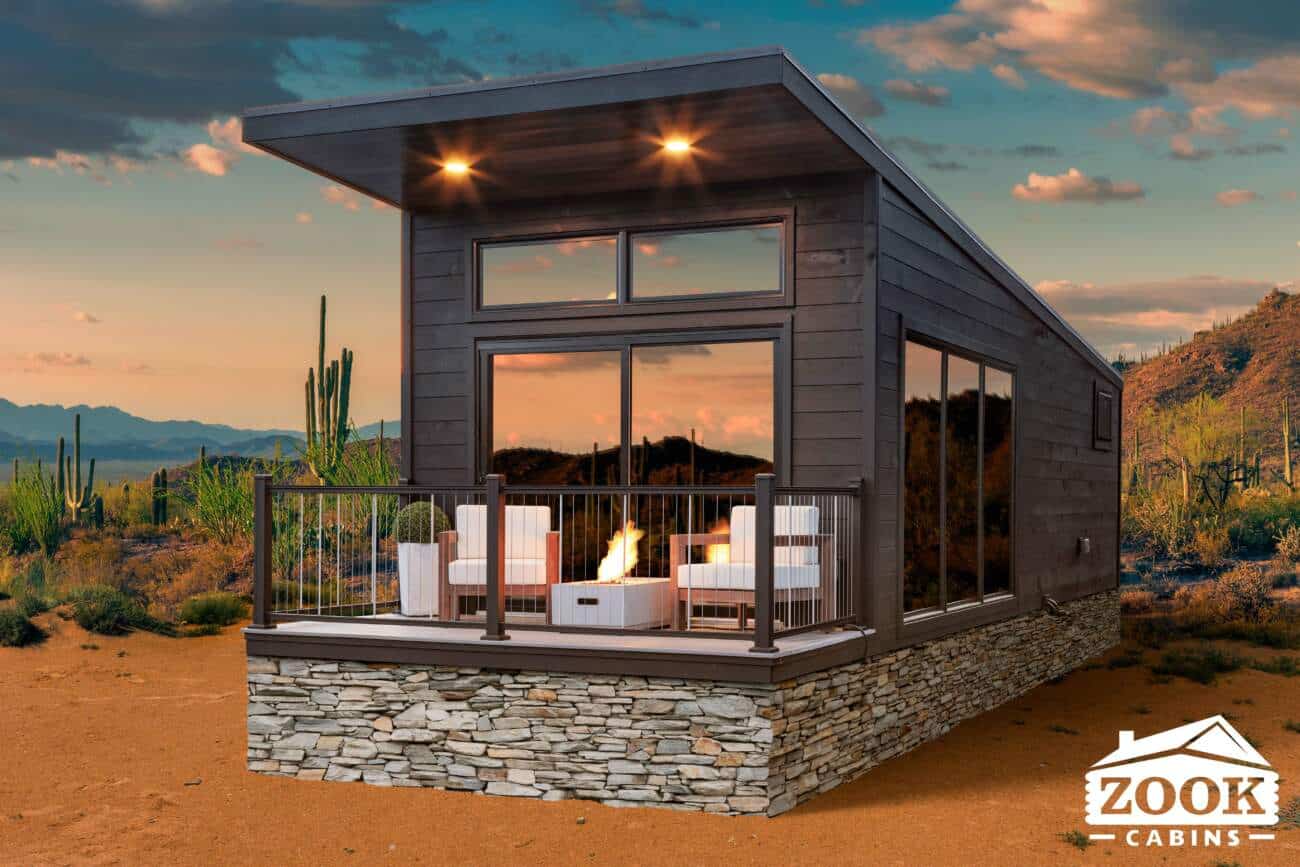
Park Model Homes For Sale
At Zook Cabins, we offer Park Model Homes for Sale throughout the lower 48 states. Whether you are looking for a simple 12×16 Hut Park Model cabin, a Luxury Park Model Home like the Rockwood, or anything in between, Zook Cabins has a park model home to fit your needs and your budget. Our styles include 1 or 2-bedroom options, with or without lofts, and most come with a beautiful porch. Check out all the Park Model Homes and Cabins we offer at Zook Cabins and find your perfect park model today.
In Conclusion
Do you still have questions about Park Model Homes, or are you ready to invest in one yourself? Whether you are looking for that simple hunting cabin, campground home, or luxury vacation tiny home, park models are a great place to start.
We’d love to hear from you and to answer any questions you may have. Contact us for more information, or get an instant price of a park model home delivered to your location. And let the joy of the great outdoors and life at a slower pace become more of a reality in your life.
